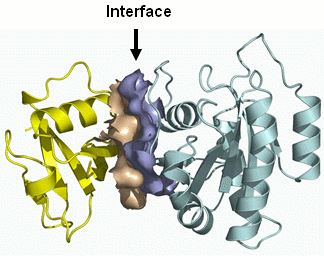Creative Biolabs provides professional services and technical supports for modulating protein interactions by rational and computational design.
Protein-protein interaction modulation can be applied to produce novel therapeutic agents. An effective approach for discovery of such modulators is through screening of combinatorial libraries of peptides. Phage display is a great traditional method to identify peptides that interact with an antigen. It can produce synthetic peptides that may have the target-recognition qualities of a protein. But the time and costs involved in these approaches can be often the limitation.
Protein design algorithms have been applied to design or engineer proteins that fold faster, catalyze faster, signal better, and adopt preferred conformational states more smoothly. The relatively new field of de novo protein design has been producing exciting results, and casts a significant impact on biotechnology and chemical biology. Engineering target activities have been successfully achieved by these powerful computational methods with functional protein designing capabilities.
The underlying physical principles governing the folding, stability, and function of a protein need to be carefully reviewed before computational protein design is carried out. In design-based approaches, researchers combine design paradigms or methods for problem solving with computational modeling techniques to predict the success of their designs. These approaches have been effective for the creation and implementation of new ideas and inventions, useful for identifying the boundaries of possible designs and eliminating impossible, impractical, inefficient, or otherwise undesirable designs, which would have otherwise been difficult to identify. In a structure-based computational method, a computational or mathematical framework is built by considering the evolution, function, stability, and functionality of a protein. The specific functions of a designed protein are then assessed experimentally. If all the characteristics are found in the designed proteins, the mathematical model or the framework are then proven to fundamentally capture the essence of a protein with success. Otherwise, one can continue to modify and create new models, which will ultimately serve the purpose of designing a novel viable protein computationally.
In practice, for better improving the likelihood of finding effective peptide modulators, we have developed a method for modulating protein interactions by the rational and computational design of phage display libraries. In this method, we have developed an empirical potential function based on statistical analysis of contact interactions across protein-protein interfaces in protein database, which can be used to guide the generation of promising candidate peptides.

Figure 1. Protein-protein Interaction (PDB: 1LFD, chains A&B)
All listed services and products are For Research Use Only. Do Not use in any diagnostic or therapeutic applications.